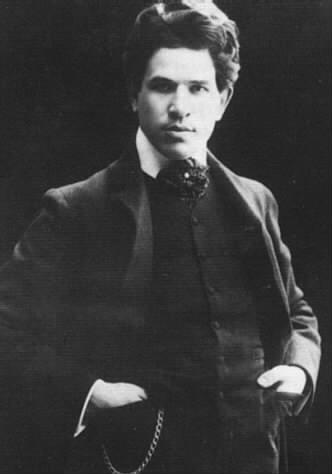To be published next week in the Elmhurst College Leader.
---
Album: Puccini: Tosca
Artist(s): Maria Callas, Giuseppe Di Stefano, Tito Gobbi, Victor De Sabata, Orchestra e Coro del Teatro alla Scala, Milano
Music critics have long been fond of drolly referring to Tosca as a “shabby little shocker” and then misattributing the comment to George Bernard Shaw. No small wonder, then, that this Tosca has long been hailed as the “greatest” opera recording of the last century, even before such milestones as the Solti Ring and the Giulini Don Giovanni.
But are such superlatives justified? There have been many fine recordings of Tosca in the 50 years since this one, most with better recorded sound and many of them boasting excellent casts. Are they so clearly second-rate?
The truth is, it depends on how you think of opera. If perfect vocalism is your standard, this performance will not be a first choice. As adored singer Floria Tosca, Callas’ striking-but-not-beautiful voice is somewhat paradoxical, occasionally sacrificing legato for the sake of some dramatic effect or another. Similarly, Giuseppe Di Stefano’s golden, lyric tenor voice sounds hollow and pressed on top, most noticeably in the heroic Vittoria! of Act 2. And Gobbi’s voice is typically venomous, lacking any real heft or depth. Those seeking consistently beautiful, secure singing from beginning to end would do well to acquire the excellent sets of Tebaldi or Caballé, the latter featuring a young José Carreras in particularly fine voice.
Dramatically, however, this recording is likely unequalled, which is saying a lot in a story driven by murder, torture, attempted rape, and suicide. Callas plays Tosca as ideally as one could hope for—a hotheaded, passionate woman subject to conflicting fits of suspicion, vanity, vulnerability, white-hot anger, and the most deeply felt compassion. For example, her jealous outburst in Act 1, “Lo Neghi?” (“You deny it?), is just short of shrill and is most convincingly pissy. Conversely, Vissa d’arte is beautiful and perfectly paced—a masterful depiction of suffering, in which the cry to God at the end of the aria is a fearful but reverent plea for mercy. But perhaps most striking is the moment when Tosca stabs and then hisses at the dying Scarpia, “Muori! Muori! Muori!” (Die! Die! Die!), delivered so viciously you can almost see the blood on her hands.
Cavaradossi is always less important in this opera, but Giuseppe Di Stefano makes a good case for him. What Stefano’s Cavaradossi lacks in heroism he makes up for in beauty—with Stefano, we never forget that Cavaradossi is a lovesick artist. His two arias come off with great sentimentality and his Act III duet with Tosca, O dolci mani, displays some of the most ardent and beautiful singing ever recorded.
But Callas and Stefano are more than matched in the Baron Scarpia of Tito Gobbi. His trademark snarl is used to great effect, capable of both stentorian authority and warm, honeyed manipulation. This is the definitive Scarpia—a vile, slithering, sadistic animal in an aristocrat’s coat, who makes Darth Vader look kind of like a sissy. At the end of Act 1, Gobbi’s Te Deum is the most gripping in the catalogue, illustrating both his declamatory style and the thoughtfulness of his interpretation. To extract an example: Scarpia’s high note in the last phrase, “Tosca, mi fai dimenticare Iddio!” (“Tosca you make me forget God!), usually milked for melodrama, is here underplayed. Why? Because for Scarpia, this isn’t a fervent confession of evil; it’s just a statement, and it’s hardly a turning point for a villain so foul. In truth, Gobbi’s Scarpia sounds most fervent when he’s torturing Cavaradossi, where his gleeful snarling conveys the Baron’s sadism perfectly. But, almost as important, he also dies very well, shouting furiously and choking on his own blood in a pleasingly graphic way.
Victor De Sabata leads the orchestra in a reading of blistering, Italianate intensity. Every line of the score is sharply defined without ever sacrificing weight or visceral impact. Furthermore, everything is paced to create the most excruciating tension possible—when else has the orchestra so perfectly conveyed the desperation of Tosca’s confrontation with Scarpia? And when else has the ending of Tosca felt so physically, mercilessly traumatic? In Sabata’s hands, the orchestra does a most marvelous thing: it becomes another voice, telling the story as clearly as any one of the characters.
In all, this is a superb achievement that admirably lives up to its reputation. If you’ve never experienced opera as drama, this is the place to start.
Highly recommended.
Grade: A+
---
NOTE: Be sure to get this 1997 Callas Edition (still in print and readily available), rather than one of the subsequent poor remasterings.

No comments:
Post a Comment